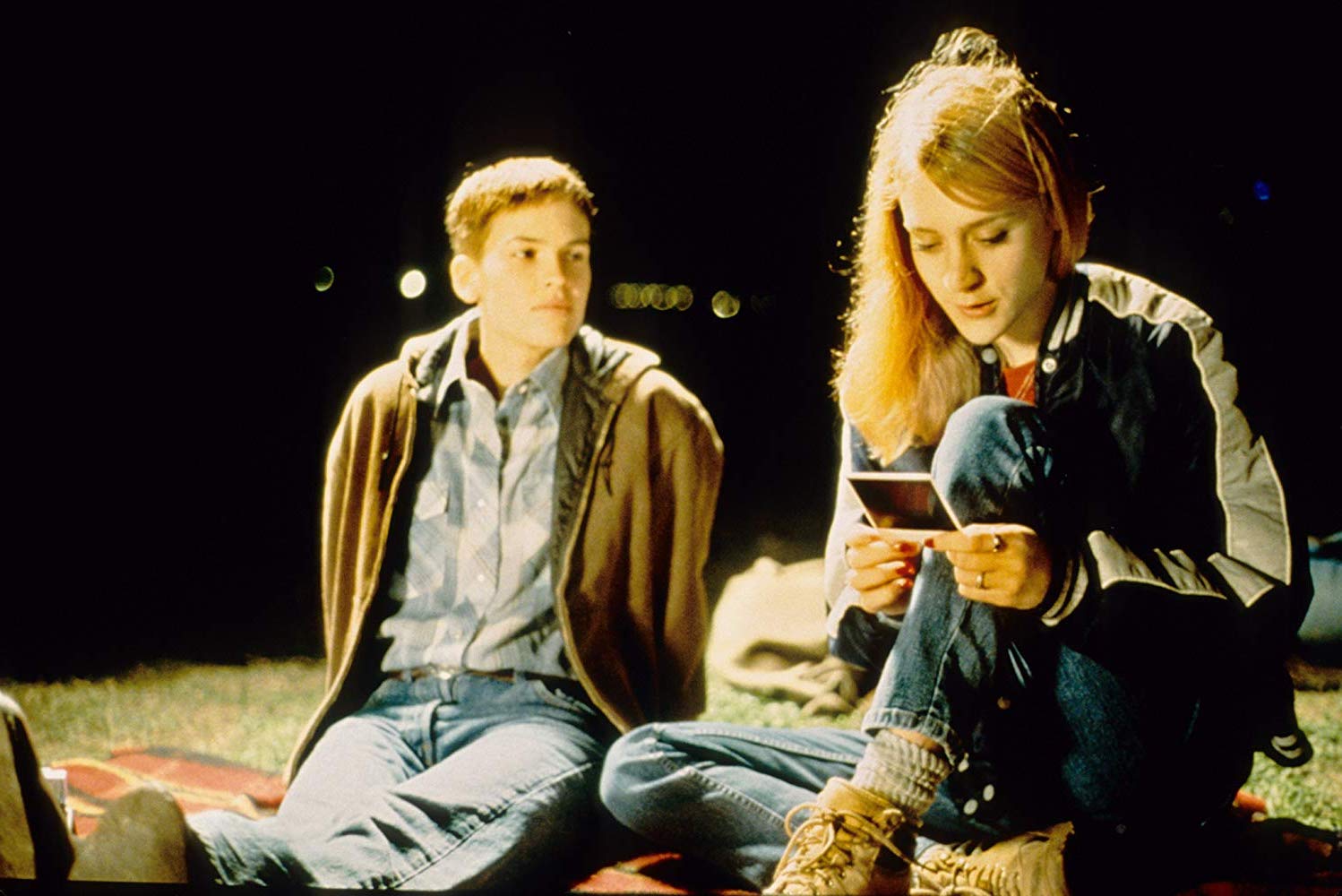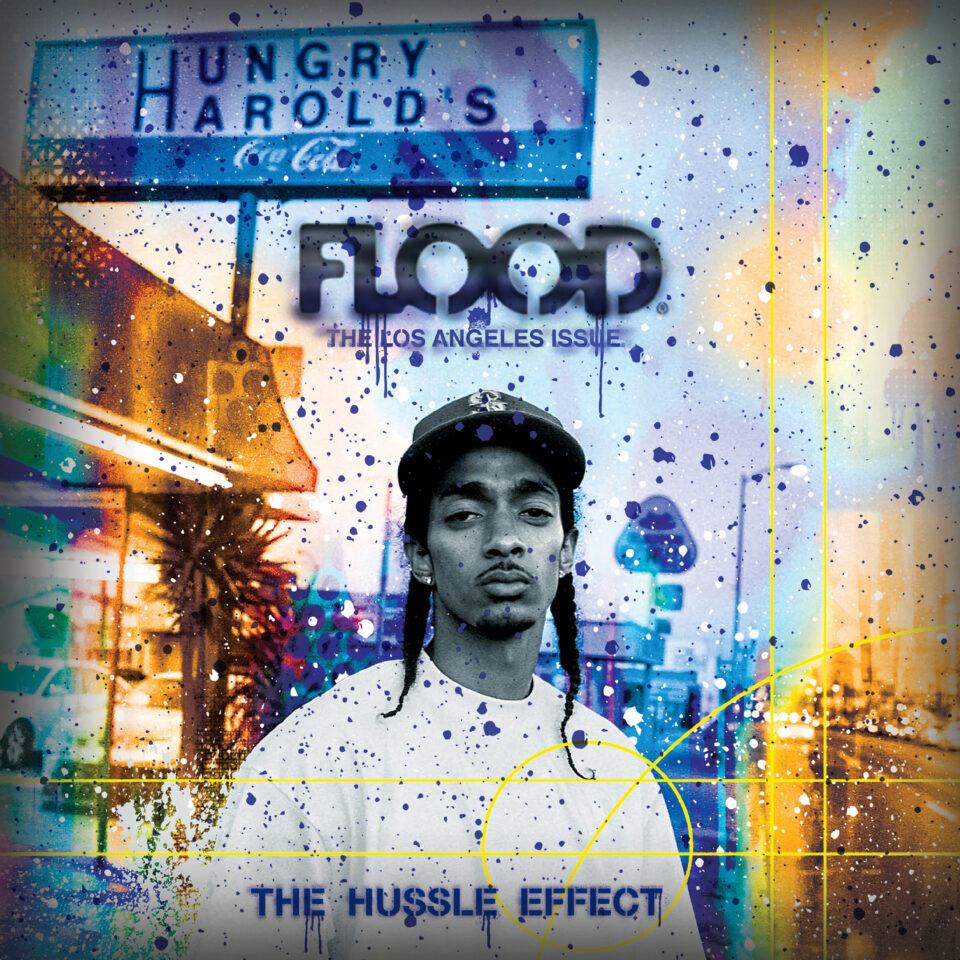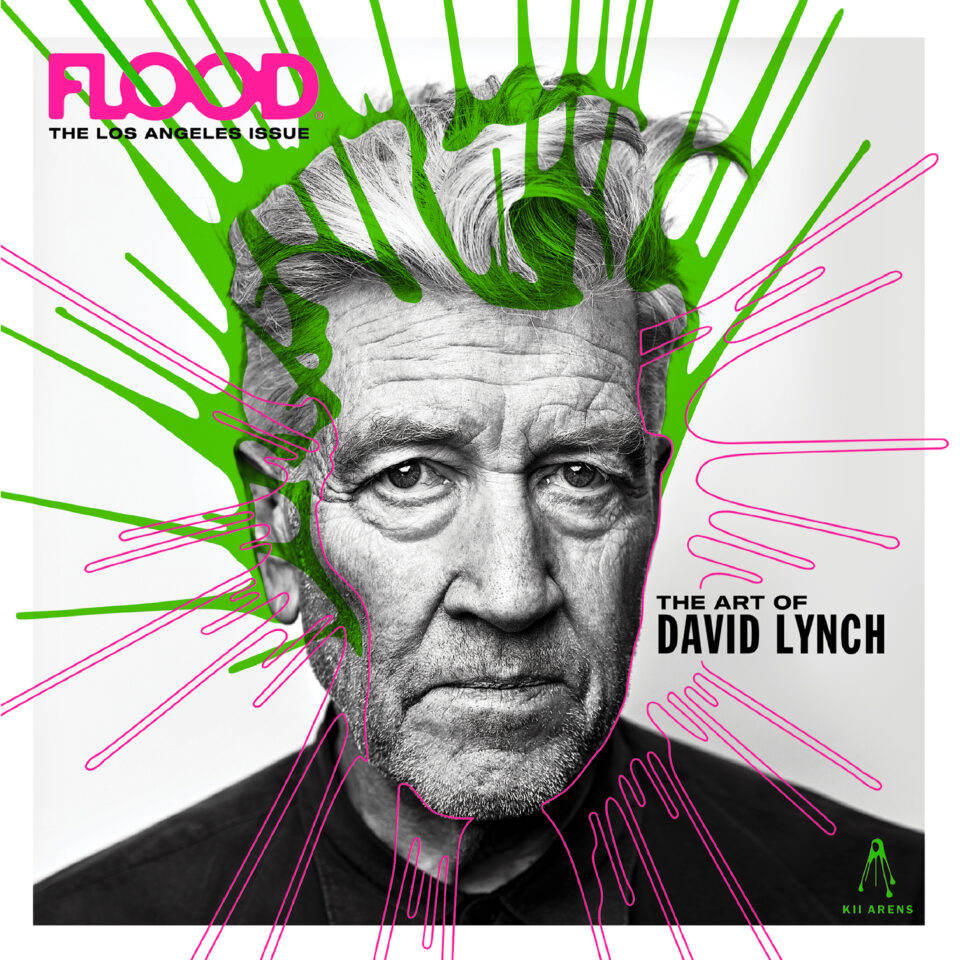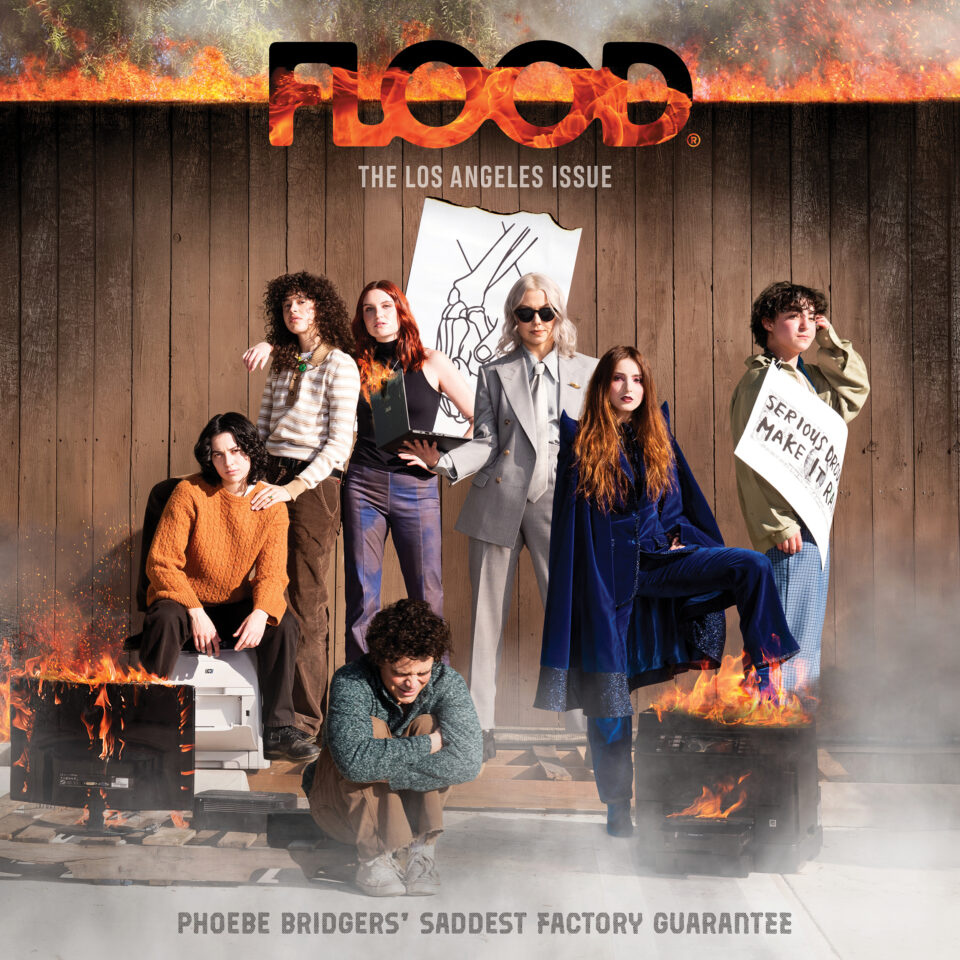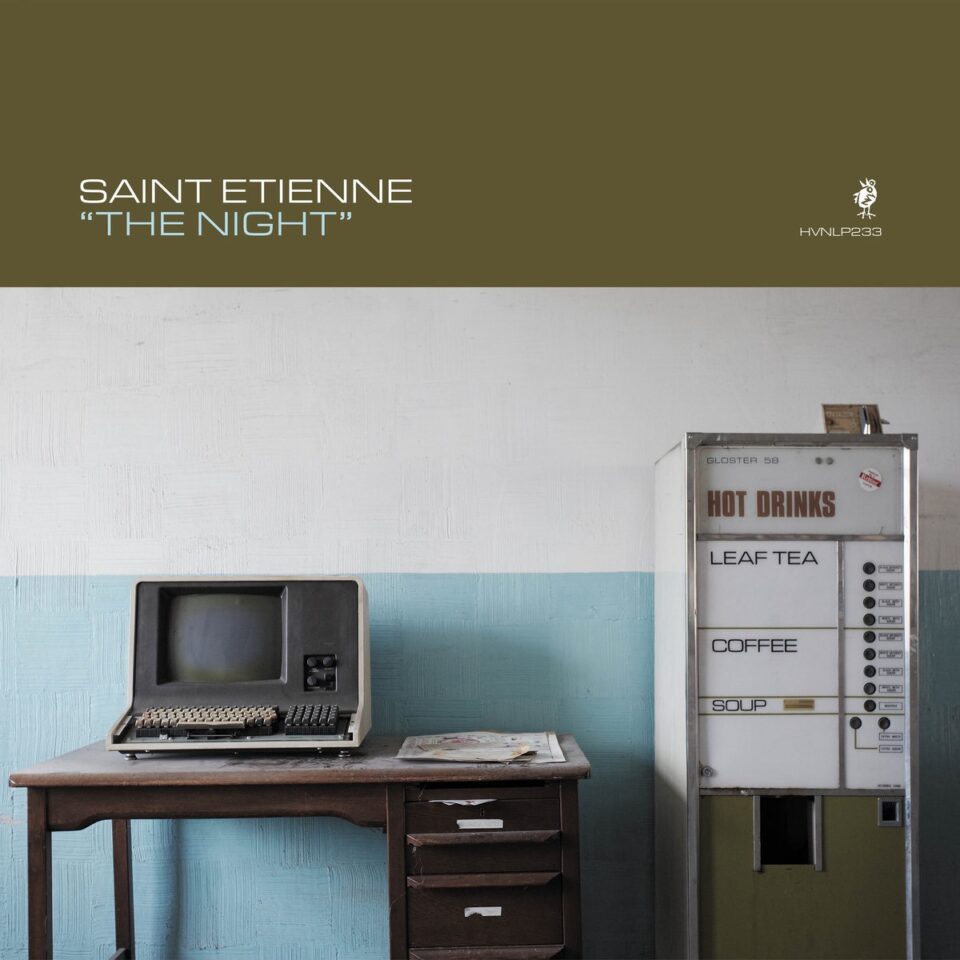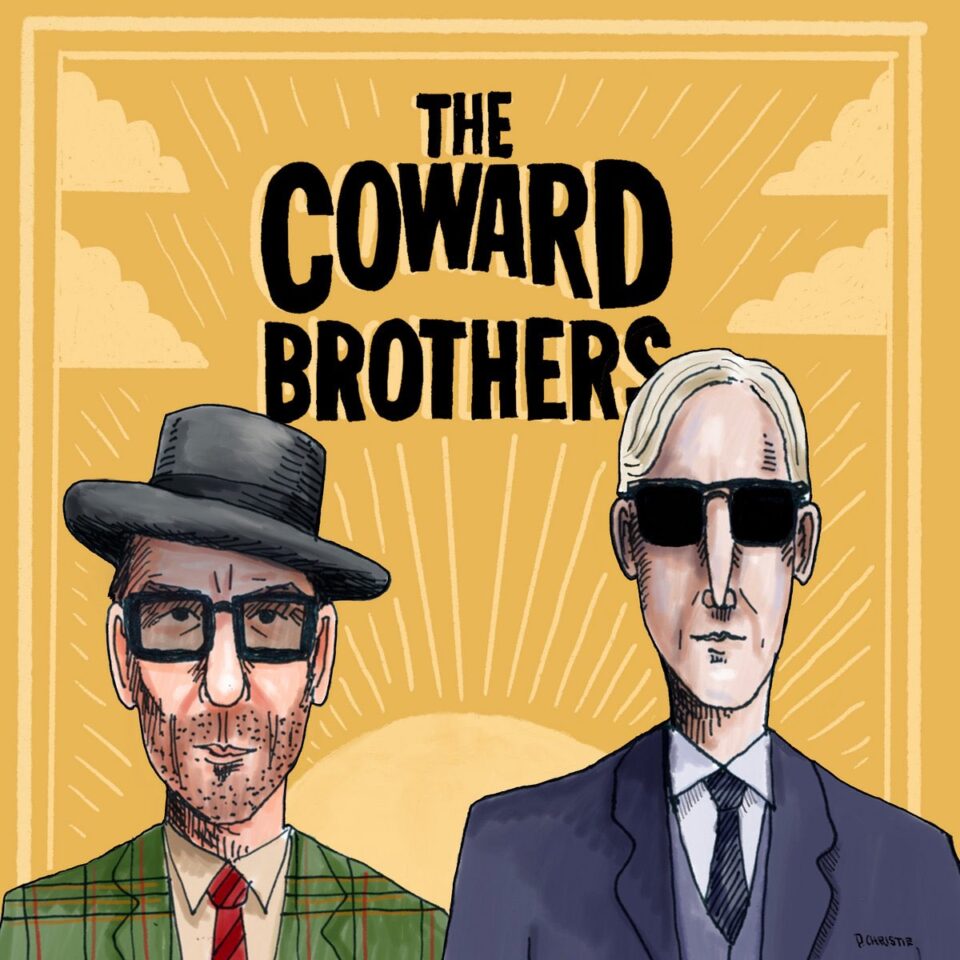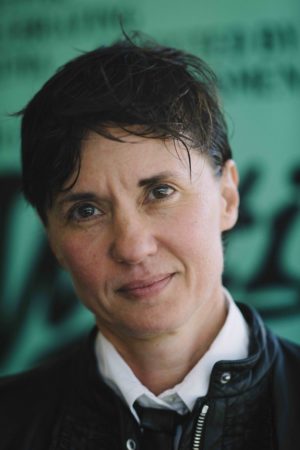
Kimberly Peirce at WUTI Goes Idyllwild / photo by Davey James Clarke
Released in October of 1999, Boys Don’t Cry is a film based on the true story of Teena Brandon, a young woman from the Midwest who reinvented herself as Brandon Teena; without the knowledge of now-ubiquitous terms like “transgender,” Brandon could only describe himself as having a “sexual identity crisis.” Teena wanted to be a boy—had felt like one, always—and so she began to dress and live as Brandon instead. But in 1993, at the age of twenty-one, Brandon was raped and killed by two men in Falls City, Nebraska, after they discovered his biological gender.
When Kimberly Peirce read this story in a 1994 Village Voice, she knew she had to direct the film adaptation. Yet fiction inspired by real life is a tricky business; Lana Tisdel, the girl who dated Brandon after meeting him in Falls City and whose ex-boyfriend John Lotter was one of his eventual murderers, was played in the film by Chloë Sevigny (everyone’s real names are used) and Tisdel ended up suing both Peirce and Fox Searchlight, claiming she was portrayed inaccurately and her likeness was used without permission. The case was settled out of court for an undisclosed sum just before the Oscars, though Peirce tells me Tisdel herself had little to do with the lawsuit in the first place, and she ultimately approved of the adaptation. Hilary Swank and Sevigny were both nominated for Oscars for the film, and Swank won.
There have been a few more recent controversies surrounding the film. Last year, the journalist behind the original Village Voice piece, Donna Minkowitz, apologized for ignorance in her reporting, admitting the article cast Brandon as a lesbian who hated “her” body because of childhood sexual abuse and trauma. In the ’90s, a general understanding of transgender identity left something to be desired. And in 2016, a screening of Boys Don’t Cry and a visit from Peirce at Reed College was met with protests; she was accused of transphobia on account of casting a cisgender female (Swank) to play Brandon instead of a real trans woman. (Swank chopped off all her hair and posed as a man to prepare for the role before production, but of course that was merely method acting.)
All external complexities aside, Peirce took a brutal crime and isolated the poetry within it. In place of a gritty drama centering on ugly transphobia or police ineptitude, she crafted an art-house love story with such themes threaded through it. Midwestern loneliness is conveyed by darkened highways, time lapses of long horizons, water towers and power lines silhouetted against the sky, and characters cruising around drunk behind the wheel, aching to leave town but too scared to actually do it.
Boys Don’t Cry is about the romance and tragedy of small towns: With nothing to do and nowhere to go, Lana Tisdel and her friends have only each other. Their days bleed together, hazes of getting high and stumbling out to buy beer, doing petty crime and dodging the cops. This purposelessness makes love—when they find it, if they ever do—all the more intense. It’s the only thing. The men in Falls City are small and mean, but when Brandon blows through with golden fantasies of a better life and endless generosity, he enchants everyone. Most tales he spins are untrue, but the lies aren’t ill-intended. When he meets nineteen-year-old Tisdel, she looks at him first with suspicion, then with eyes hooded by lust. And Brandon is so eager, so desperate to be loved.
John Lotter, Brandon’s eventual rapist, is played by Peter Sarsgaard as a good-natured and seductive villain; when he first meets Brandon, he throws him into a bar fight and flies in after, instantly on the same team. He welcomes the new guy, until that guy starts putting the moves on Lana, whom John loves unrequitedly. And until that guy is revealed to be a girl. John and Tom—the former’s considerably rougher best friend—are confronted with something alien, and lash out to destroy it. John spearheads the campaign to rape and humiliate Brandon; but Tom is more violent, and carries out the worst of the crimes. They’re all scared of the way Brandon tricked them, of how quickly they loved him.
We caught up with Kimberly Peirce during her appearance at Women Under the Influence inaugural film festival, WUTI Goes IdyllWILD, in Idyllwild, CA, to discuss the opportunities she did and didn’t get post–Boys, how Hilary Swank handled filming that horrific rape scene, and why Peirce was the right person to tell this particular story.
You made Boys Don’t Cry twenty years ago; how do you think the industry has changed since then, for better or worse, particularly in the case of female directors, who are still in short supply?
It has changed, which is kind of phenomenal. When I came up, there weren’t many female directors, so I didn’t really have people to model myself after—other than Jane Campion. So I modeled myself after the boys. I had two strong suits: one, I was a strong woman, but also I was a person, at that point, who had been straight and was discovering my queerness. In many ways, that gave me something to write about. On the creative side, what you saw in the independent world—particularly coming out of Columbia University, where Kathryn Bigelow and I came from—was that if a woman was writing/directing, there was a kind of even playing field. You went to festivals, you did well. Typically in the awards area, little movies didn’t win, so when Boys won it was wonderful. But then on the other side of that, people like Bigelow and me and others who could prove we were committed, and could make a profitable product, and make entertainment, and make male and female content—there was a gap of us working. The question was: Why are the women not working as much as the men, once they’ve had that success?
I’m a governor at the Academy of Motion Pictures, head of the Director’s Branch, so I’m in that room now. We choose the new members for the Director’s Branch, and I focus specifically on diversity. I try to find the women, the people of color. Only in the last three years have I been the head, and it just got created. Twenty years ago, it was all men. There was no focus on bringing in diversity. It wasn’t even contemplated.
Something that happened to me [after Boys Don’t Cry] is, I got all the meetings with the top producers. I met all the actors. I was in demand. But when you were actually making your work, the interferences against female creativity were devastating. When I made Boys, I had a queer female producer; so there wasn’t a power struggle over gender. She wasn’t fundamentally at odds with the idea of a woman being powerful. But the DNA of a system that was strongly heteronormative and male was at odds with what women were trying to do. Even if we did exactly what the men were doing, our scripts were being rewritten, we would order a piece of equipment and we wouldn’t get that exact piece of equipment. I’m not trying to come up with a victim position, I’m just trying to give you an understanding of how women were being denied the creative power they needed in order to make the quality of work in those subsequent movies that they had in their first. The first movies were so damn good because people were allowed to make their work! You are the power of the independent movie; but once you move into the [studio] system… I thought my willpower was enough. But I had to learn a whole new game.
Weren’t you offered some other director-for-hire projects, but turned them down because they didn’t fit with your creative vision?
“I got all the meetings with the top producers. I met all the actors. I was in demand. But when you were actually making your work, the interferences against female creativity were devastating.”
Most of us writer/directors will write a few of our own movies, and then direct other people’s movies. But it took five years to get Boys made. For the women, A) how many movies out there are actually worth doing? There aren’t a lot, and B) if you get one, can you do what you want to do with it? In my next two movies, the level of interference was so great, it was unrecognizable to what I had been able to do with Boys. And audiences felt it.
I was in that period where it was very typical for a woman to have seven years between her movies. When I made my next movie, they asked why it took me so long. If you see that systemically there are obstacles to women getting their work made consistently, don’t ask a woman who just managed to get her work made why she didn’t do more!
I have a sense of humor about it, but I also try to enlist journalists to interrogate the system. I understood my success in Boys was a great gift and a payoff for a lot of hard work, but I thought if I could make it, there must be no sexism. That was wrong. The exception does not disprove the rule. That’s why I’m so active in the movement.
Some publications reported the real Lana Tisdel as having problems with your film, primarily because she didn’t want people to think she continued dating Brandon after discovering his biological gender, like she does in Boys. I know you did a lot of research while writing the screenplay; so how did you respond to Lana’s complaints? What’s your responsibility in being faithful to the real story, while also trying to make a satisfying work of art?
Well, she tried to sue me for a lot of money. But it turns out she wasn’t doing it, it was a guy who had put some money into the feature documentary about Brandon. This is important to get out there. We were campaigning for the Oscars, and Fox said Lana was going to sue us. But it turns out this guy was behind it—Angry Films was the name of his company. He was trying to get the rights. At NYFF, Venice, and Toronto, he threatened to sue, and we were on pins and needles… we pulled screenings at each of those three festivals, and we had to personally indemnify the movie for millions of dollars, and then we got to screen it. The lawsuit was ridiculous. But they got some money. I had to go in and talk to her…and at the end of the day, Lana watched the movie with me. We sat in the theater together at Fox Studios. And you can find this in the trades; Lana Tisdel said, “Kimberly made a beautiful portrait of Brandon,” or something like that.
So she liked it, but when the lawsuit came about she changed her tune?
No, the other way around—the lawsuit came before she saw the movie. And I had interviewed her, multiple times. I have it on video. We wrote the script from the video. I thought in the beginning, there was a moment where she knew Brandon was a girl and that was that. And she wasn’t with him after. But when I was interviewing her, I said, “tell me when you knew Brandon was female-bodied.” And she was like, “when they stripped him.” And I said, so you didn’t know before that? And she was like, “no, I always knew Brandon was a girl.” That’s on the tape.
Again, we used the word “girl” back then—I’m not misusing the term, even though Brandon identified as a boy. I’m using the language Lana used. The truth was, she knew and didn’t know that Brandon was a female-bodied person, based on how attached she was to preserving the fantasy. I went to her tabula rasa and said, “You tell me.” And what came out was a level of sophistication that was way more interesting than there being one moment of her “knowing.”
What is my responsibility? To the underlying emotional truth. I do tend to be very historical and anthropological, so I’m very interested in the actual truth, too. I had been to the murder trial. There was a pretty deep level of objectivity in that.
 I don’t know if you’ve had a chance to see the Netflix show Unbelievable yet, but people are appreciating that it’s a female-created and directed series about sexual assault—like yours, also based on a true story and on a crime article—and how the female vision grants the subject a kind of empathy that’s often missing from male-directed films with rape in them. How did you deal with shooting the more upsetting scenes in BDC, particularly the rape sequence? Were there any techniques you used to get the performances you needed from the actors, while simultaneously trying not to trigger or push anyone to their breaking point?
I don’t know if you’ve had a chance to see the Netflix show Unbelievable yet, but people are appreciating that it’s a female-created and directed series about sexual assault—like yours, also based on a true story and on a crime article—and how the female vision grants the subject a kind of empathy that’s often missing from male-directed films with rape in them. How did you deal with shooting the more upsetting scenes in BDC, particularly the rape sequence? Were there any techniques you used to get the performances you needed from the actors, while simultaneously trying not to trigger or push anyone to their breaking point?
I’ve been public about the fact that I’m a survivor. I’ve done thirty years of therapy. I’ve had a deep-seated interest in human sexuality in so many different forms; in terms of pleasure, coercion, my own experience. And as I’ve come of age, I’ve understood that most women have been sexually harassed or assaulted. Think about that. How dare it be, that we can say that? Why is a little girl born, and her destiny is to be harassed and assaulted? Somebody has created some real structural opportunities for the people who are doing the harassing and the abusing. So I come to it with a lot of humility and compassion.
That rape scene—I always knew it was going to be intercut with the sheriff. I had a sense that the sheriff had raped Brandon too, by making Brandon reveal how he was raped.
And that’s all real dialogue, right? Taken straight from the police’s interview with Brandon after the rape?
Yep, every word is real. I had one audiotape of Brandon’s voice, of him being interviewed, and I gave it to Hilary.
I had a good intuitive sense that I had to talk to the actors; tell the actors I’m there for them, tell them my thoughts, hear theirs, and together find a version of the scene that speaks truth to the character. And with sex and rape, I treat it like an action sequence. I walk through it, we do a blocking for bodies—it’s all bodies in motion. Then on the day, I ask for a closed set; only people who need to be there are there. Always ask the actors what they want.
On the day we were shooting the rape scene, Brandon Sexton III, who plays Tom, disappeared. I’m on a fucking independent movie—you don’t goddamn disappear! [Laughs]. He was upset, and didn’t want to shoot the scene. But if you don’t shoot the scene that night, you don’t ever shoot it. Do or die. What do you do? [Pause. I realize this was not a rhetorical question.] How would you solve it?
I would definitely go have a conversation with him—
—what if he was crying and said, “I don’t want to do the scene, I don’t want to represent a rapist, I don’t want to put that in world.”
Oh, god. I guess I would say that it’s important to illustrate how traumatizing rape is, and in order to portray that in a sensitive, thoughtful piece of art, you need somebody to step up and play the role of the rapist. And if you do a good job, perhaps it will help viewers to better understand the perspective of rape victims. I don’t know—that’s why you’re the director, not me.
That’s half the answer! This story needed him to play that role; we were down the road, in Texas, in the middle of the night, and we needed him. Another thing I try to do in these rooms, around men, is say, “‘Let’s not shut down men’s points of view.” Why are men raping? Why are men shooting? What is going wrong in the species?
“Another thing I try to do in these rooms, around men, is say, ‘Let’s not shut down men’s points of view.’ Why are men raping? Why are men shooting? What is going wrong in the species?”
So what I said to him was, “You know why you’re the right person? Because you’re crying. Because you don’t want to be the rapist. If you were coming in like, ‘Yo, Kim, I can’t wait for that rape scene…’”
Yeah, that wouldn’t be a good sign.
I said, “You are showing humility, you are showing a conscience, you are exactly the kind of beautiful human being who I trust to be inside of this, and to help us understand why Tom raped.” Why did he rape? He had a hard-on, OK, but he also was insecure, and wanted to prove himself to John, and maybe he regretted it. You bring that to life, and maybe some guy who is having those feelings will say, “Oh, I see how those feelings can turn into something gross. Something horrible.”
He also said, “I don’t want to hurt Hilary.” And I said, “I want you to tell her that. Let’s go back to set and talk to Hilary.” As you know, we don’t actually hurt people in acting. But he still told her, “I’m not a rapist and I don’t want to promote rape and I don’t want to hurt you.” And what she said was beautiful. She said, “You need to go at me hard. It needs to look right for the audience. You’re not going to hurt me, I’m fine, don’t pull your punches.” The full commitment of those two human beings…part of being a director is setting it in motion, and also sensing what’s needed at the moment. It was more important that he told her that, instead of me telling her. It was important for me to bear witness to the two of them creating this trust, and then when they acted they became these other people.
That night, I felt like I was channeling something. I had been terrified to do the rape. But what I realized was my terror of doing it was because of my obligation to Brandon. I’m very interested in emotional and physical violence, and I consume pornography on my own—but I don’t ever want to create pornography of violence. I don’t want to create a violent image that is disrespectful to the original person or the viewer or that would ever encourage somebody to go and try this at home. The truth is, you’re always in danger of that. That’s an important awareness to have.
That night, I realized I was meant to tell this story because of my personal history and my investment and my desire not to make pornography. And [going back to] “the female gaze”—I think we’re still creating it! We’re still discovering it! FL

